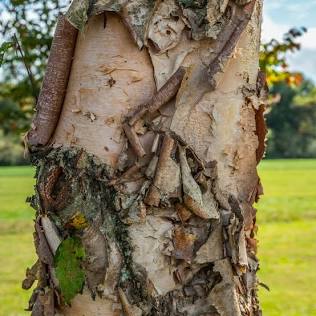MinervaFlora - July Update
- Lisa Craddock
- Jul 1
- 2 min read
Continue walking along the path past the double bench area at the south lake toward Greenline Way. At the intersection of Minerva Lake Road and Greenline, you will find 2 garden beds, one on either side of Greenline. In each of these beds is a River Birch (Betula nigra), an awesome and beautiful tree native to our area which has 4 season interest.
This tree can be identified by the bark which is cinnamon brown and has a papery appearance that peels away from the trunk exposing light to dark brown bark underneath, giving a very textural appearance. The leaves turn yellow in late summer/early autumn and often fall early. Its height can be 40-70’ and width around 40’.
The catkins are a food source for birds and it is a host plant for many moths and butterflies, including the Cecropia Moth. As a Keystone Species, it hosts 284 species of butterflies/moths. We currently have a couple Cecropia caterpillars feeding on our River Birch as I type.
This birch prefers moist to wet acidic soil in sun or part sun, although the leaf color is better in full sun. It is often found in nature along streams and waterways. Negatives may be twig drop, early leaf drop and it can suffer a few pests, such as aphids. Side note: I noticed an abundance of aphids and their damage on our Heritage River birch, but soon after, I found ladybugs and future ladybugs still in egg stage at the ready to eat the aphids-nature in action. The web of life.
Fun fact: the River Birch was used for ox yokes and wooden shoes as well as other items around the farm.










Comments